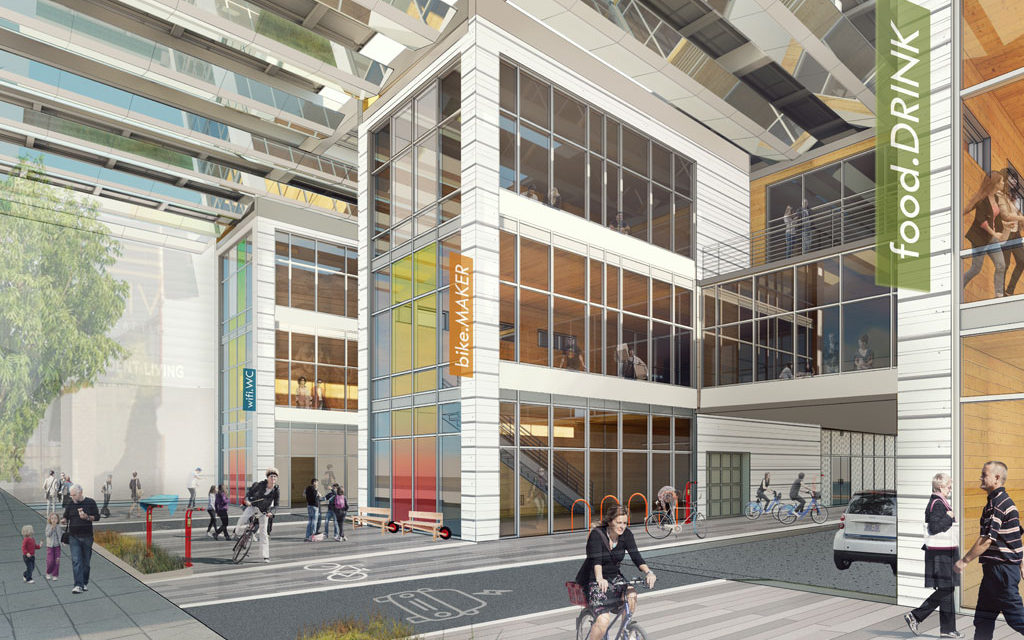Program honors exceptional student design projects that showcase innovation in sustainability
Washington, D.C. – April 20, 2018 – The American Institute of Architects Committee on the Environment (AIA COTE) in partnership with the Association of Collegiate Schools of Architecture (ACSA) and in collaboration with Architecture 2030, announce award recipients of the 2018 AIA COTE Top Ten for Students: INNOVATION 2030 Competition.
The competition recognizes ten exceptional studio projects that integrate creative and innovative design strategies working towards achieving carbon-neutral operations through daylighting, passive heating and cooling systems, sustainable materials, water conservation, energy generation, and other sustainable systems.
The program challenged students to submit projects that use a thoroughly integrated approach to architecture, natural systems, and technology to provide design solutions that protect and enhance the environment. Award recipients for this year’s COTE Top Ten for Students: INNOVATION 2030 Competition are:
Fabricating Wellness
Amy Santimauro, Katelynn Smith, and Joel Bohlmeyer; University of Oregon
Faculty Sponsor: Brook W. Muller
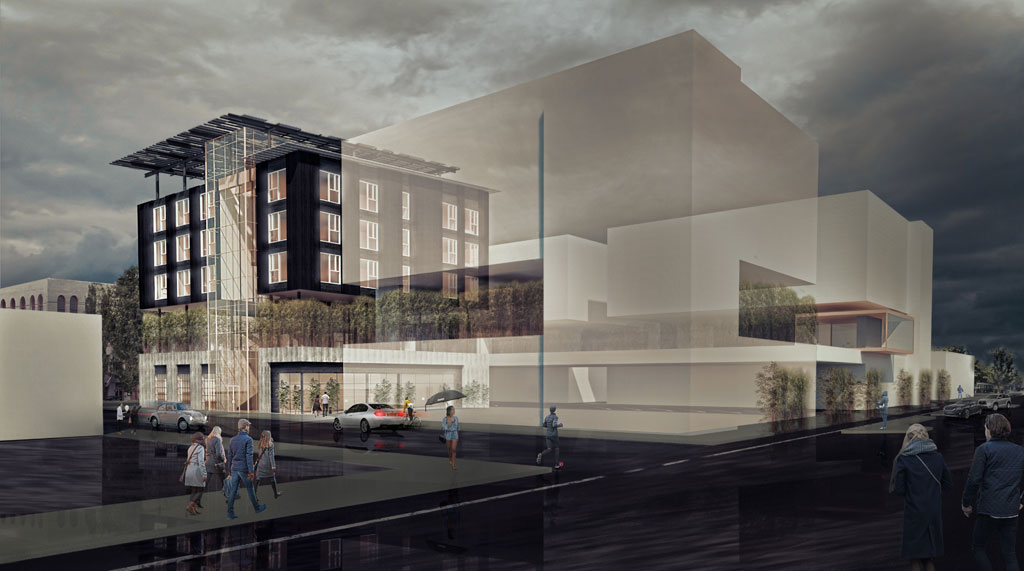
Juror comments: The jurors were impressed with this winning project which included a production cycle within the building. Water grows the bamboo, which is then used as the primary building material. The student’s emphasis on renewable energy sources, natural ventilation, and sustainable materials is a clever process and program. It shows a good urban prototype by focusing on mixed-use design.
Known Unknowns: Dead Ends Aren’t Dead
Bianca Lin, Joshua Park, & Wilson Fung; California College of the Arts
Faculty Sponsor: Janette Kim
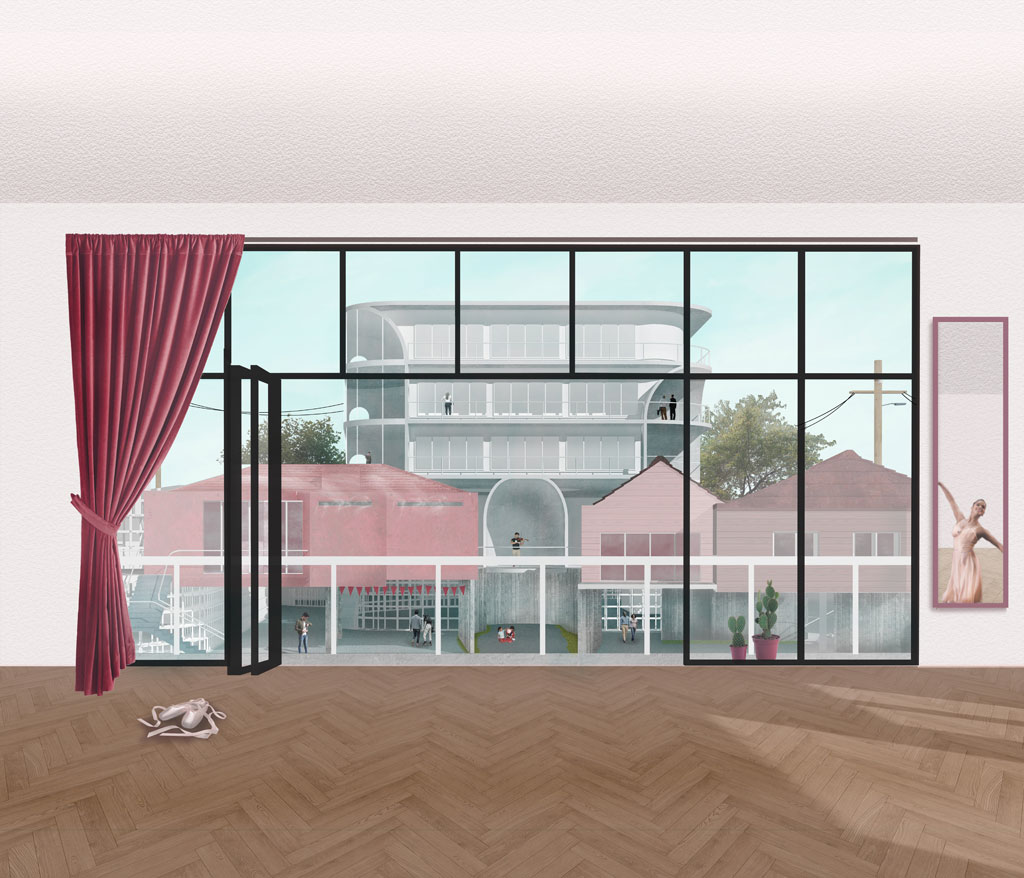
Juror comments: This unorthodox project stood out for its progressive policy proposal, which embraces the spirit of the competition. The students embraced the notion of time, which is important to environmental efforts escalating the project beyond the 10 measures. The graphic design of the submissions is beautiful and memorable. By retrofitting existing houses and inserting new typologies, this project proposes long-term economic stability and solutions to sea level rise.
Prescriptive Hydrologies
Brie Jones; California State Polytechnic University, Pomona
Faculty Sponsor: Pablo La Roche
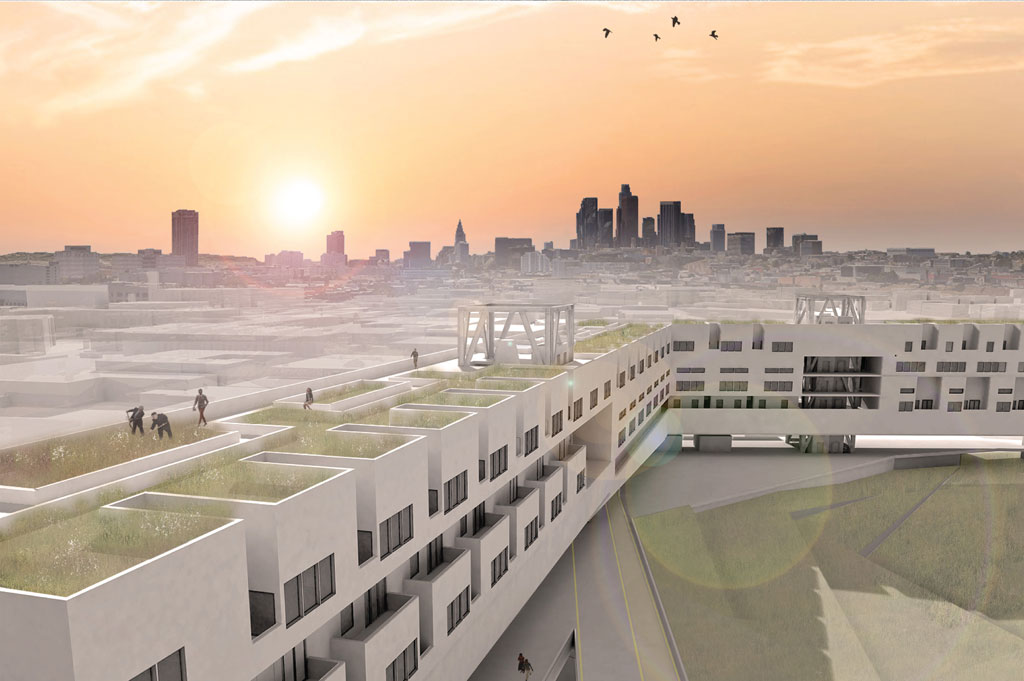
Juror comments: This project stood out for its creative use of water, discovering intelligent and creative new ways of deploying water. The student’s diagrams are strong and show a commendable view at larger environmental issues. The scuba tanks are an entertaining idea on user experience which could be expanded.
INTERCONNECT: Connecting Paths, Connecting Programs, Connecting People
Harrison Polk and Madison Polk; Clemson University
Faculty Sponsors: Ulrike Heine, Ufuk Ersoy, and David Franco
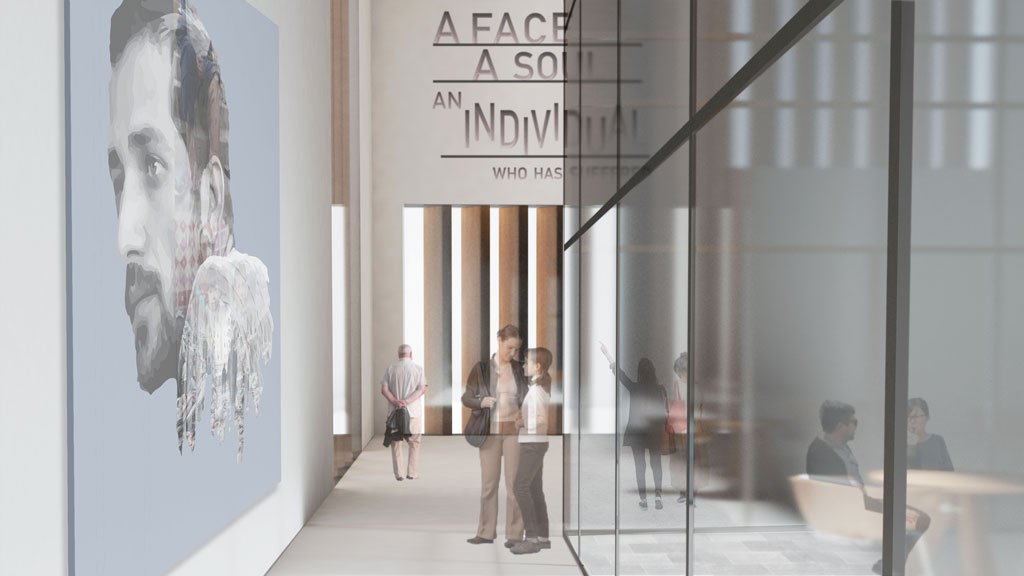
Juror comments: This is a sophisticated winning project that shows a promising urban design. The students used the 10 measures to create a well-rounded project. The endeavor to address larger social issues and legal services for refugees are commendable and respected.
The Fourth Place: Sharing Sustainability
Mary Demro; Montana State University
Faculty Sponsors: Steven P. Juroszek, Thomas McNab, & Jaya Mukhopadhyay

Juror comments: This well-researched winning project has detailed diagrams and a beautiful graphic representation. It proposes a slightly utopian plan, that is a good social proposition in which people can have their major needs met without traveling. The artistic style of this eye-catching projects has exceptional detail and content, clearly detailing its environmental impact
Pier 55: South Philadelphia Community Center
Caleb Freeze & Michelle Kleva; Marywood University
Faculty Sponsors: Miguel Calvo Salve & Russell B. Roberts
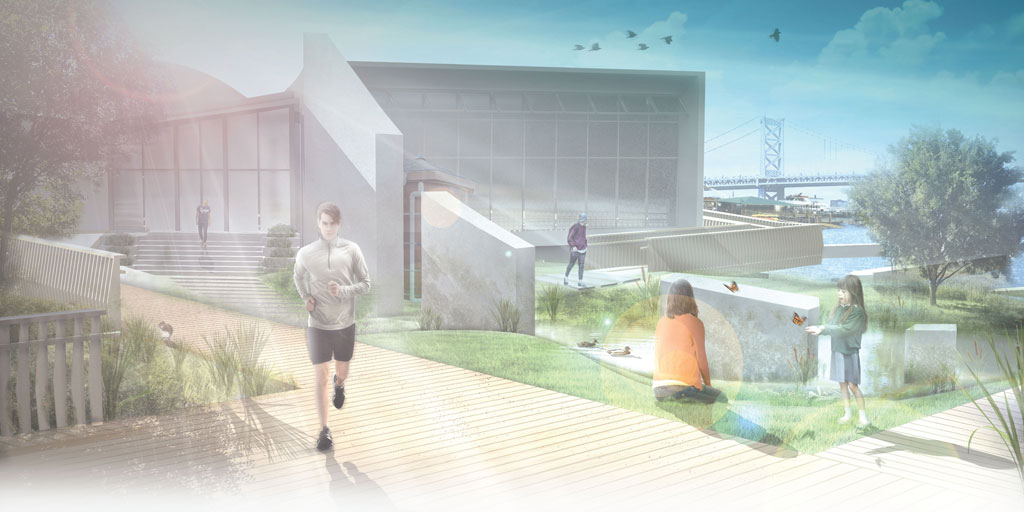
Juror comments: This winning project brings an interesting and dynamic perspective to South Philadelphia, with a Community Center on a pier over the Delaware River. The building integrates systems, wetlands and architecture into one cohesive language that makes sense in terms of performance. The students created a superb user experience and place to explore.
Studio M: A Template for Sustainability and Wellness in Pittsburgh Pennsylvania
Austen Goodman; Savannah College of Art and Design
Faculty Sponsor: Alice Guess
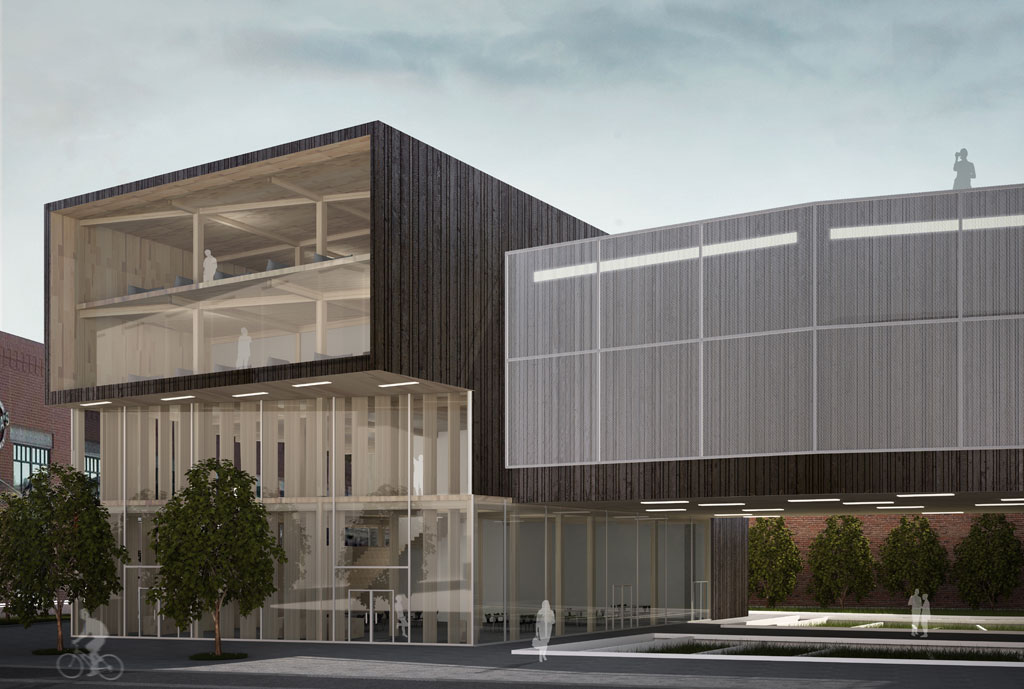
Juror comments: This well-rounded winning project shows a firm grounding in reality. It displays a good understanding of the 10 measures, with drawings and statistics to embellish every criteria. The building is believable, convincing and could be built in the real world today.
Energy Commons: A Hypothetical Replacement for Gas Stations
Buddy Burkhalter; University of Washington
Faculty Sponsors: David Strauss & Louisa Iarocci
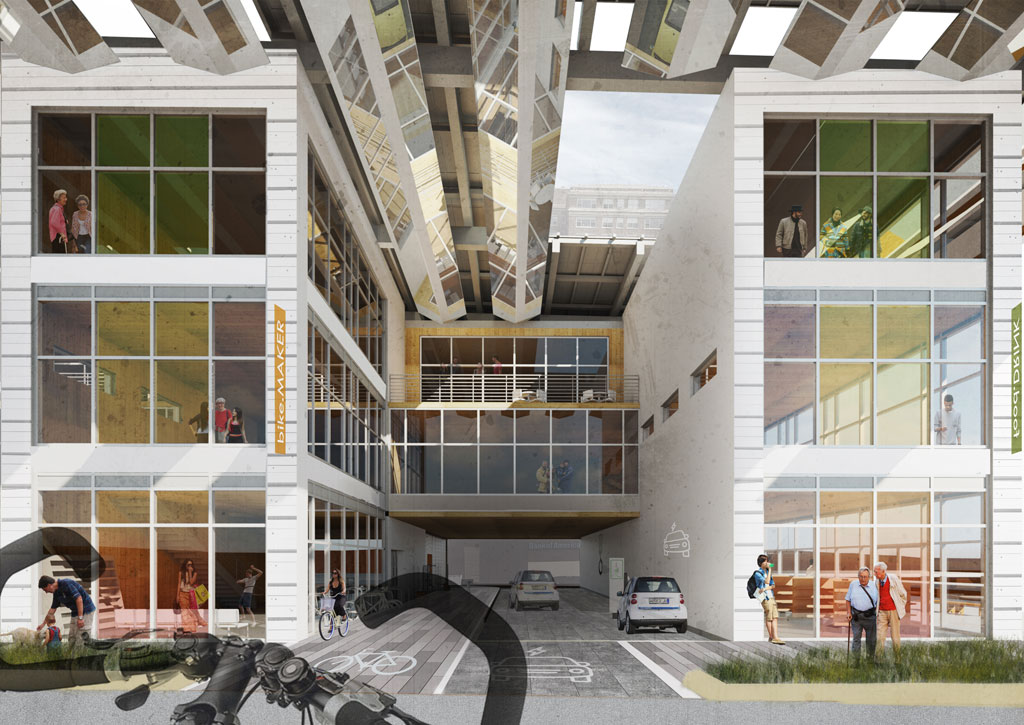
Juror comments: This winning project proposes an interesting mixed-use, energy conservation theory: How can people productively use their time while their car is being serviced? Reinventing gas stations and other auto-centric building types will be significant as we re-think the way we live with cars. The students integrated the urban relationship with the driver experience and additional consideration to the non-driver will show a further elevation of the project.
City Centre Glassworks: An Adaptive Reuse Workshop and Experimentation Facility
Justin Yan; Carleton University
Faculty Sponsors: Sheryl Boyle & Claudio Sgarbi
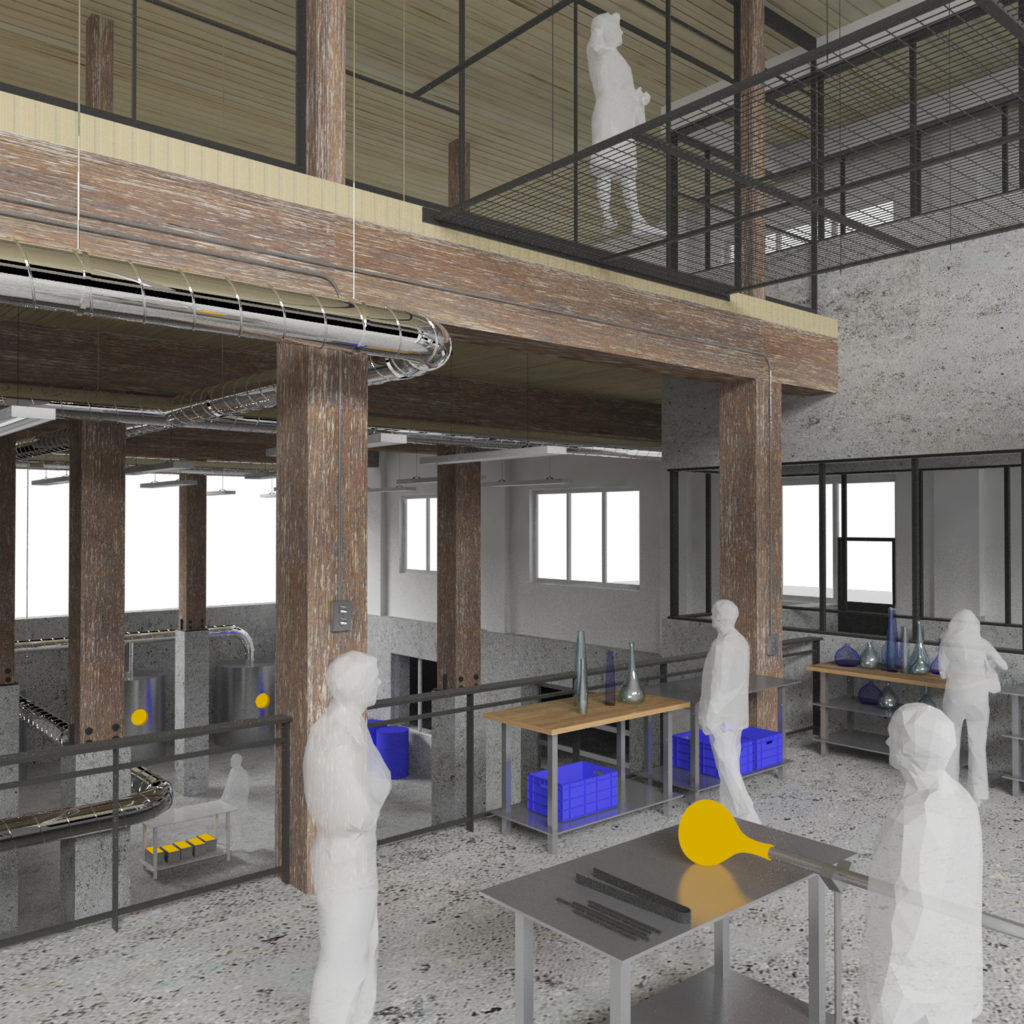
Juror comments: This adaptive reuse project utilizes the heat from making glass to warm the building and save on energy; a superb adaptation for [Ottawa’s] climate. The buildings programs and systems are well designed and tailored for each other. A wonderful example of this is the rising mist, created from residual heat, brings an element of delight to the project. The architectural exploration is plausible and grounded in reality.
Dis/Placement
Nicholas Scribner & Clare Hacko; California College of the Arts
Faculty Sponsor: Evan Jones
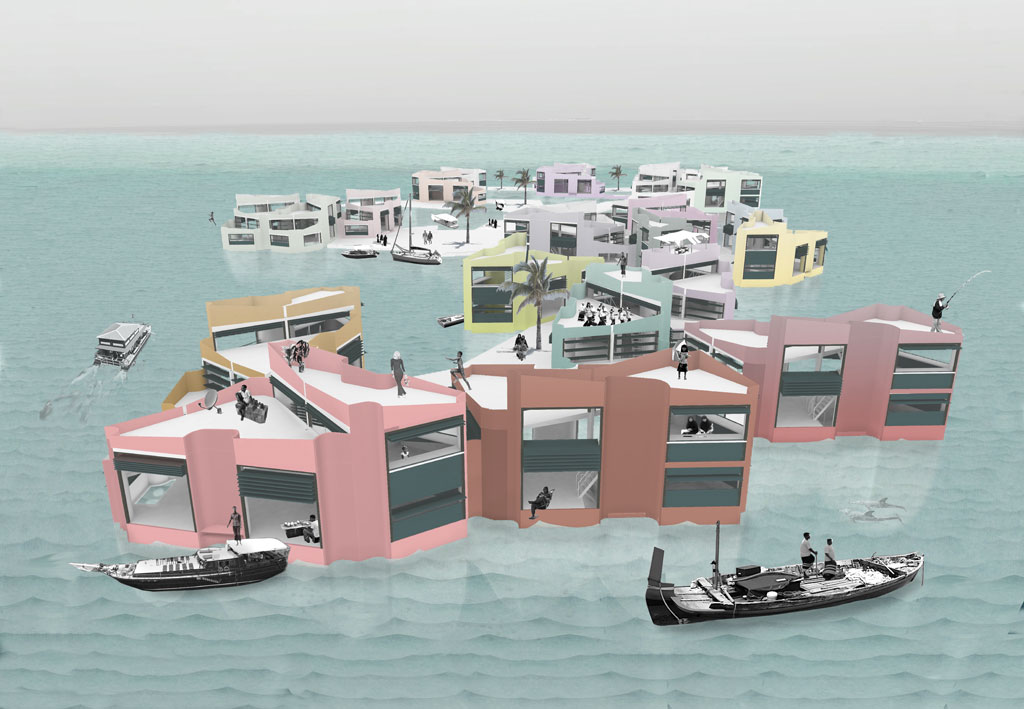
Juror comments: This interesting study brings attention to climate change and rising sea levels by imagining a floating community in the Maldives. The students understood how to work with a different ground planes and included an exploration of what it would be like if you could see a building from below. Above ocean the design is a simple modern style, while underwater “bladders” create ballast and an ocean microecosystem.
The competition jury includes: Karin Bjorkman, Nola | Van Puersem Architects; Justin Brown, MASS Design Group; Chris Chatto, ZGF Architects; Thomas Fisher, University of Minnesota; Jeanne Gang & Juliane Wolf, Studio Gang.
Complete details for each project are available on ACSA’s website: www.acsa-arch.org/2018-COTE-Student-Winners. The projects will be on display at the 107th ACSA Annual Meeting in March 2019.

